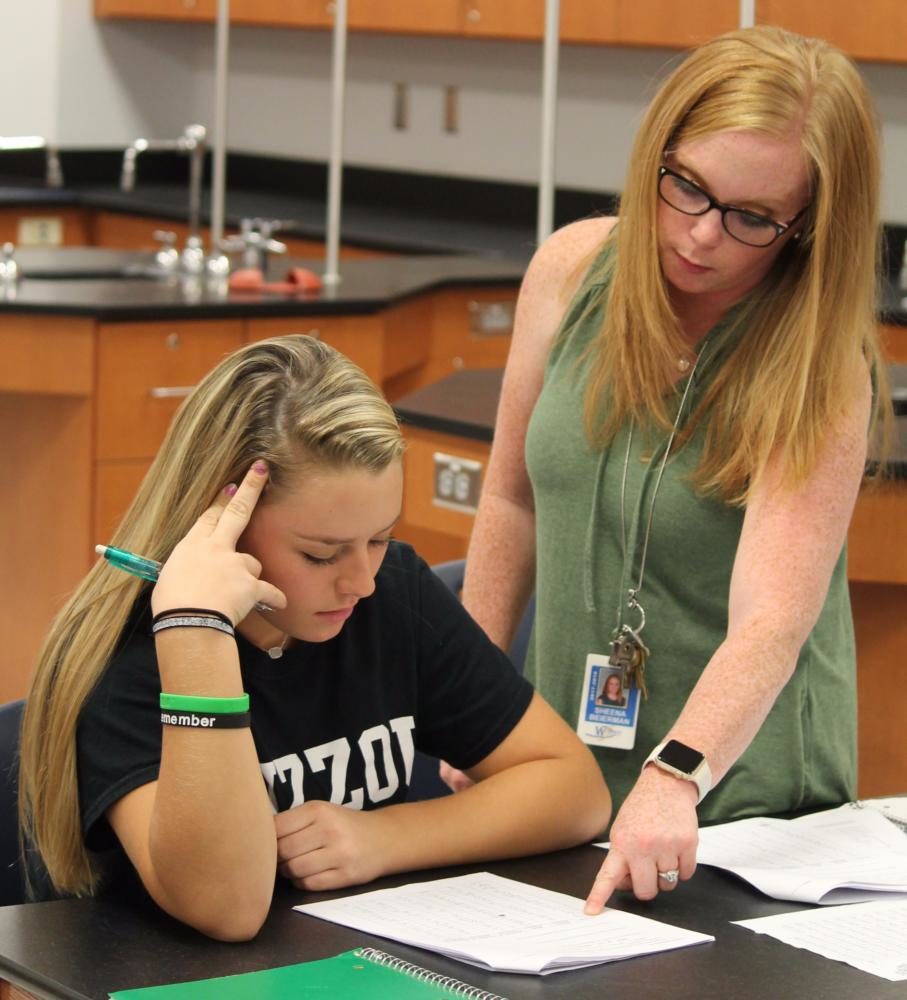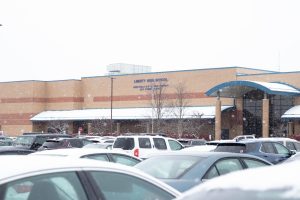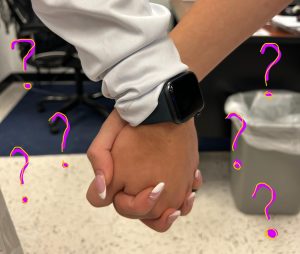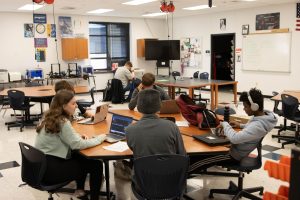Revolutionizing Teaching
Making a change in the way classes are run has its pros and cons
Students, like sophomore Katelyn Reichle, can receive help from teachers on homework during class instead of finding time to ask them before class.
September 19, 2017
Many people have probably experienced a flipped classroom but don’t know the term for it. A flipped classroom is when a teacher provides notes, usually in a video or online, to be taken outside of class as homework so that assignments and activities can be done inside of the classroom.
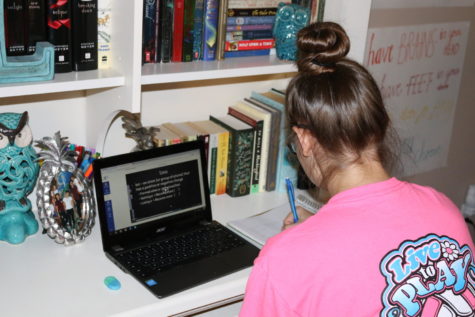
This is beneficial to science-driven classes like chemistry because it allows more time for labs to be completed in class. Both Mr. Sacre and Ms. Beierman teach chemistry and use the flipped classroom method of teaching.
“[Flipping my classroom] allowed my students to just have more time with me in class,” Sacre said. “I think it makes us a little more efficient in terms of getting through the material.”
Having notes taken at home allows each student to write at their own pace, so they won’t miss any important material. Ms. Beierman had very similar opinions to Mr. Sacre as to the benefits of flipped classrooms.
“I think the benefits of a flipped classroom is that it gives students 50-55 minutes during the day to get more one-on-one time with me so rather than doing worksheets at home and studying at home,” Ms. Beierman said. “They watch me do the lectures and then they get to actually do… homework, whatever homework would be, in class so whatever questions they have they can ask me instead of asking their parents or googling it.”
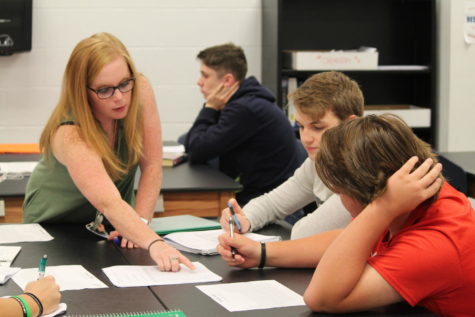
Many students like flipped classrooms, but there are also those who don’t.
Those who do like them, like senior Jana Bowman, like that it allows students to set the pace of their learning.
“You get to go at your own pace. You really get to take the time to understand it because everyone learns at a different pace,” Bowman said.
However, those who don’t like them, like sophomore Ethen Kennedy, don’t like how time-consuming the at-home notes are.
“For people that have a lot of stuff going on outside of school, I’m doing three sports right now, taking notes at home is time-consuming. Homework you can do really quickly, but you cannot do notes quickly. You have to go at the pace of the video,” Kennedy said.
Flipped classrooms provide students with the ability to learn at their own speed and allow them to get homework help from the teacher without the hassle of trying to find time to see them before class. It can be tedious and time-consuming, though, to take notes outside of class because some people if given the opportunity to set their own speed can make a 5 minute note video stretch over 30 minutes. It also makes it so students can’t ask questions about the notes when they have them thus forcing them to either remember to ask the question the next day or forget and remain confused.
Though flipped classroom teaching has its pros and cons, a blend of traditional teaching and flipped teaching is a nice way to relieve some homework stress from students because just taking notes from a video is definitely less work for the brain than actual homework.


